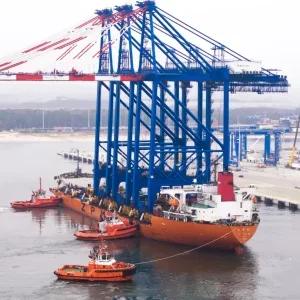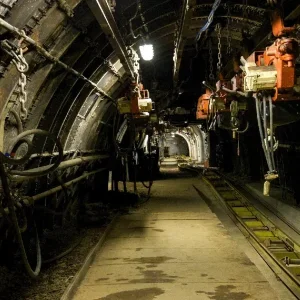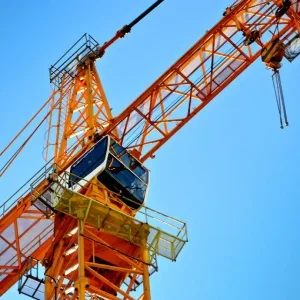Jilland engineering was tasked with removing a worn-out chain loop that measures 4m wide and 60m long. The chain feeds mixed cement through a Lepol grate preheater and into a kiln at Hull, UK’s South Feriby Cement Plant, operated by Rugby Cement.
The chain runs on a series of rollers and shafts 18m (60ft) above the ground.
‘When you break the chain, you have to have a loose end,’ said Dave Wilson, small projects general manager. ‘If you are pulling one end, the other end wants to run away. What you have got to do is control it – either manually, which is putting people in a place of risk, or with a Bolton winch.’
Wilson specified two 5t-pull hydraulic double-drum Bolton winches running at about 183 bar (2,700 PSI) from the UK’s Lifting Gear Hire (LGH) Winches. Rated flow was 77L/min (19 gal/min).
LGH Winches claims to be the only hire company in the UK that stocks them. It has a total of four. ‘Because they are so special, they may only be used once a year. It depends on the project,’ says LGH regional representative Mike Botham.
No longer made, these winches have two drums. ‘They are a type of winch I used to use all the time in mining,’ Wilson says. ‘You can select which drums you want to power – either both at the same time, or each independently.’
Wilson chose the Bolton winches because they simplified the job. Only two operators were needed. ‘The logistics of four separate winches would be horrendous,’ he says. ‘If there had been an item on the market, a four-drum winch operated by one person, I would have used it.’
The rope wound around the powered drum was attached to the near end, and the rope on the free-running drum to the far end and used the drum’s friction brake to stop the chain from falling off the rollers. The free-running drum paid out rope, and the powered winch rope pulled rope in.
Two operators were working side by side, each controlling one double-drum winch.
‘The operators were only four feet apart. They could talk, see the pressure gauges of each others’ winch, which told them the force and the braking effect they were applying, which was vitally important to operation safety.’
Two winches were used in case the chain was pulled slightly off centre and caught on the frame. ‘I could move the chain from side to side by altering the force from each winch,’ he says.
The winches pulled off five links’ worth of chain, a section about 2m long, which hung off the end of a steel bed frame. The weight of this hanging chain prevented the rest of the chain from rolling out. Then the ropes were detached and reattached further down the chain.
Next, a technician used a thermic lance to cut through the high-grade steel, and a 5t-capacity air hoist lowered the 2t section to the floor. Then the two pulling winch ropes were re-attached to the next section to be pulled out of the Lepol grate preheater.
Once the entire chain was lowered to the ground, technicians could overhaul the rollers and shafts in the facility. Once the mechanism was ready, Jilland assembled the chain from a kit, and pulled the sections back in 25 links at a time. It used a 25t capacity mobile crane to lift up the parts, 100 links at a time – which took 90 lifts. The job was completed in December 2004.






